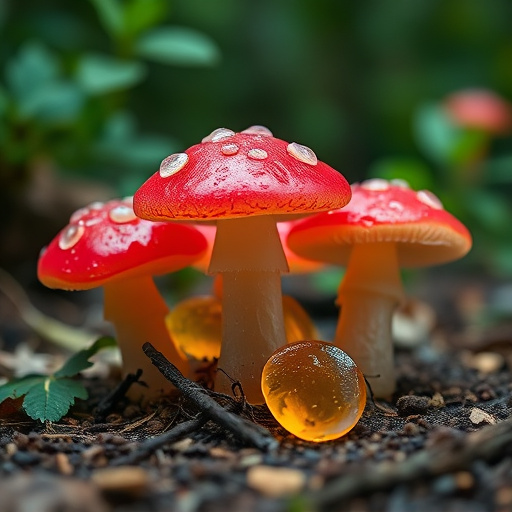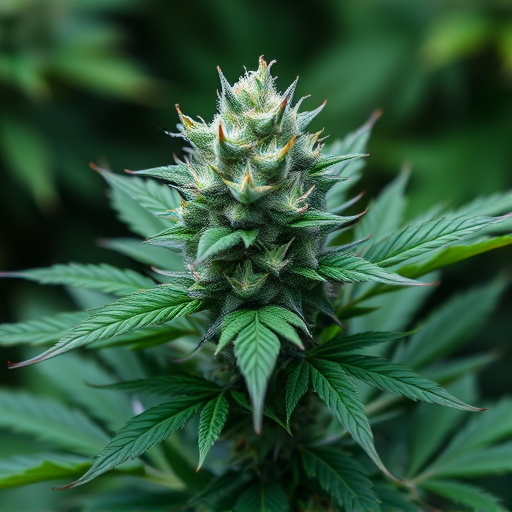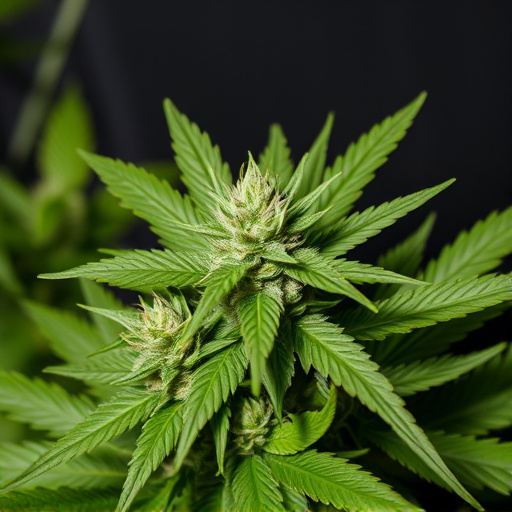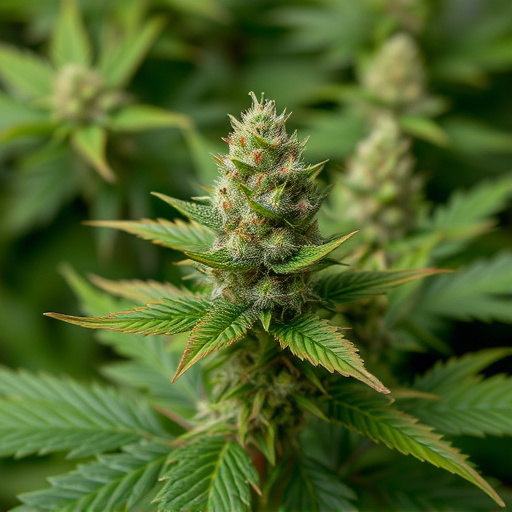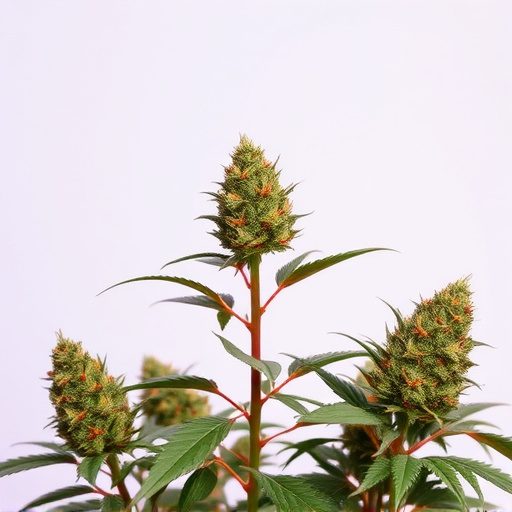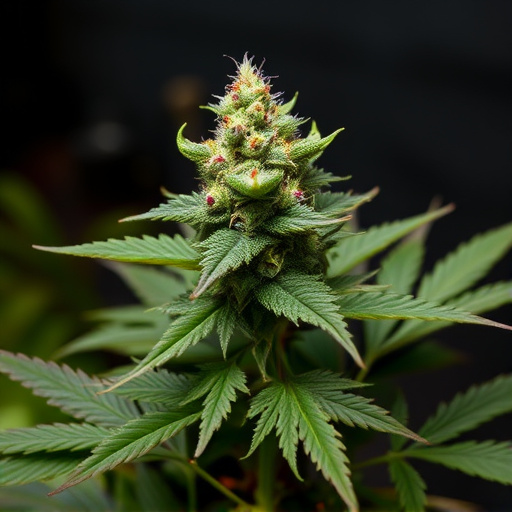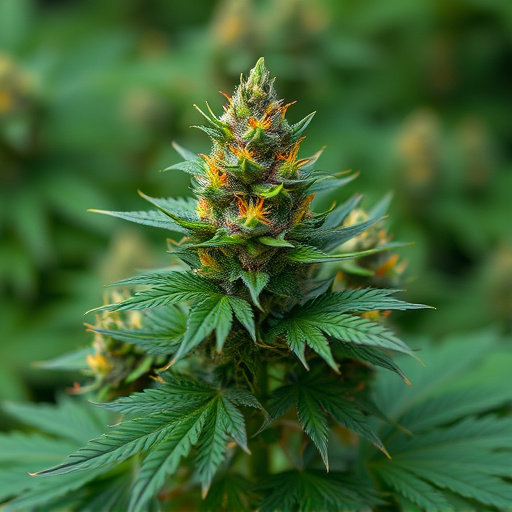The color change in cannabis flowers, from vibrant greens to oranges, yellows, reds or purples, is a complex biochemical process influenced by environmental factors and cannabinoid production (THC & CBD). These colors indicate the plant's maturity and chemical composition. Anxiety weed strains, known for their striking colors, suggest potent chemical profiles with potential therapeutic advantages, including antioxidant-based anxiolytic effects. The intricate relationship between genetics, environment, and flower colors guides cultivators in creating tailored experiences that meet specific user needs.
Discover the enchanting transformation of cannabis flowers, as their vibrant hues evolve over time. This phenomenon isn’t just visually striking; it holds a deeper scientific meaning. In this article, we explore the intricate process behind cannabis flower color change and its connection to anxiety weed strains. Unveiling the factors that influence pigmentation, we delve into how color impacts the cannabinoid profile, offering unique properties sought by users.
- The Science Behind Cannabis Flower Color Change
- Factors Influencing Anxiety Weed Strains' Pigmentation
- Understanding the Impact of Color on Cannabinoid Profile
The Science Behind Cannabis Flower Color Change

The color change in cannabis flowers is a fascinating process, driven by complex chemical reactions and environmental factors. As cannabis plants mature, they undergo a series of transformations, especially during the final stages of flowering. The most notable aspect is the shift in pigmentation, which can transform the vibrant greens into hues of orange, yellow, red, or even purple. This transformation is not merely aesthetic; it’s a scientific marvel rooted in biochemistry.
The color variation is primarily due to the production and accumulation of different cannabinoids, notably THC (Tetrahydrocannabinol) and CBD (Cannabidiol). These compounds interact with chlorophyll, the green pigment responsible for photosynthesis, leading to its breakdown and subsequent color changes. Different levels of these cannabinoids result in diverse color palettes. Interestingly, certain anxiety weed strains are known for their vibrant colors, which can be an indicator of potent and unique chemical profiles that may offer specific therapeutic benefits.
Factors Influencing Anxiety Weed Strains' Pigmentation
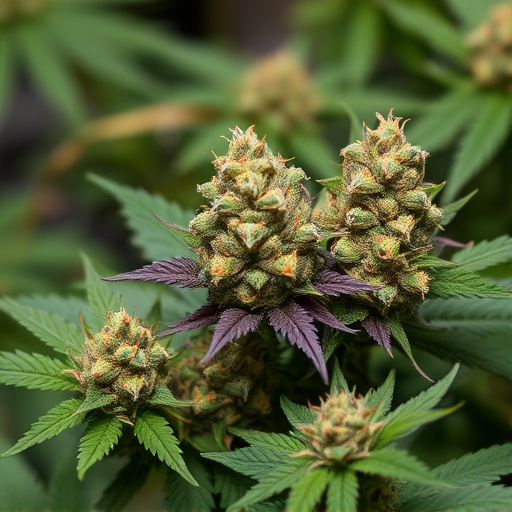
The pigmentation of cannabis flowers is influenced by a multitude of factors, and for anxiety weed strains, these elements can significantly impact their visual appeal and potential therapeutic effects. One key factor is genetics; different strains are bred to express unique colors due to variations in pigments like anthocyanins and flavonoids. These compounds not only give the flowers their distinctive hues but also possess antioxidant properties, which may contribute to their anxiolytic (anxiety-reducing) potential.
Environmental conditions play a crucial role as well. Factors such as temperature, light intensity, and duration of daylight can trigger specific color changes during flowering. For anxiety weed strains, optimal growing conditions that encourage the development of vibrant colors might also enhance the production of cannabinoids and terpenes known for their calming effects, ultimately improving their therapeutic value.
Understanding the Impact of Color on Cannabinoid Profile

The color of cannabis flowers isn’t merely a cosmetic trait; it holds significant clues about the plant’s internal chemistry and potential therapeutic effects. Cannabinoid profiles, determined by the plant’s genetic makeup and environmental factors, are closely tied to the visual palette of different strains. For instance, vibrant shades of purple in anxiety weed strains often indicate higher levels of cannabinol (CBD), known for its calming properties, while rich, deep greens might suggest a higher concentration of tetrahydrocannabinol (THC), associated with psychoactive effects.
Environmental cues, like light exposure and temperature, play a pivotal role in these color changes. Photoperiodism, where plants sense day length, triggers physiological shifts that influence the production of specific cannabinoids. This intricate interplay between color and cannabinoid profile offers cultivators valuable insights for creating tailored experiences for users seeking relief from anxiety or other conditions, highlighting the importance of visual cues in understanding cannabis’ complex chemistry.
The vibrant color change in cannabis flowers is not merely aesthetic; it holds a complex interplay of scientific and practical implications. Understanding this process, especially regarding factors influencing anxiety weed strains’ pigmentation, offers insights into the intricate relationship between botany and biochemistry. By recognizing how environmental cues trigger these transformations, cultivators can optimize their growing techniques to enhance specific cannabinoid profiles, catering to diverse consumer preferences, including those seeking relief from anxiety through tailored anxiety weed strains.

